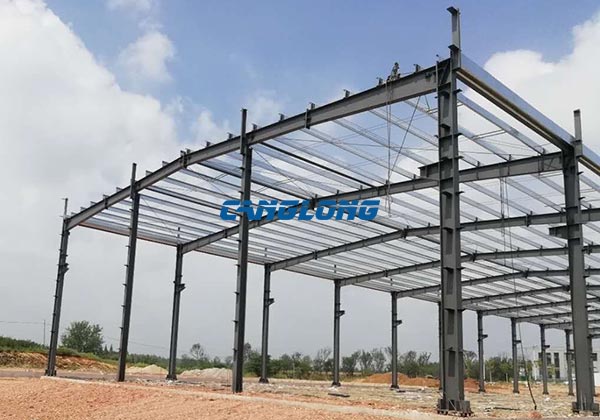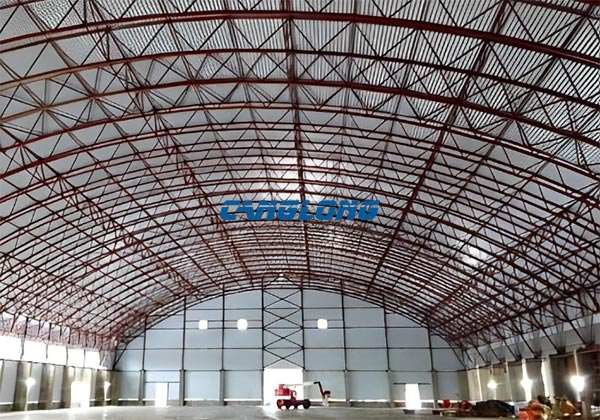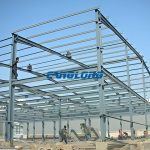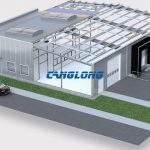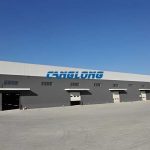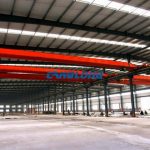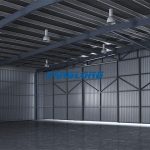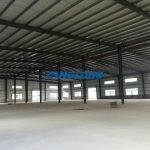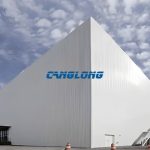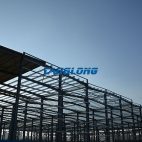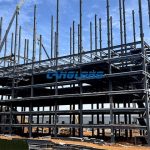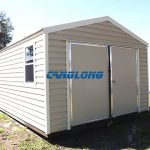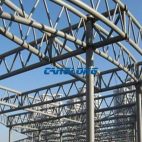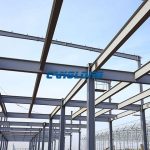How to design a steel structure building?
Steel structures are usually used for structures with high heights, long spans, complex shapes, heavy loads or crane lifting capacity, large vibrations, activities that require movement, or frequent assembly and disassembly. Intuitively speaking, buildings, stadiums, opera houses, bridges, TV towers, sculptures, warehouses, factories, residences, mountain buildings and temporary buildings, etc. They are the embodiment of different forms of steel structure building, which are consistent with the characteristics of steel structure itself.
Structural type selection and layout are qualitative to the structure, and should be carried out under the guidance of experienced engineers due to their extensive involvement.
The “conceptual design” should be emphasized in the whole process of steel structure design, which is especially important in the stage of structure selection and layout. For some problems that are difficult to make accurate rational analysis or not stipulated in the code, the design ideas obtained from the mechanical relationship between the overall structural system and the sub-system, failure mechanism, earthquake damage, test phenomena and engineering experience can be used.
From a global point of view to determine the layout of the control structure and detailed construction measures. Quickly and effectively conceive, compare and select in the early stage, the resulting structural scheme is often easy to calculate by hand, the mechanical behavior is clear, the qualitative is correct, and unnecessary cumbersome calculations in the structural analysis stage can be avoided. At the same time, it is also the main basis for judging whether the output data of computer internal force analysis is reliable or not.
Steel structures usually have structural forms such as frame, plane frame, network frame, cable-membrane, light steel, and tower mast. Most of its theories and technologies are mature. There are also some problems that have not been solved, or there is no simple and practical design method, such as the stability of the reticulated shell.
The characteristics of different structural forms should be considered when selecting the structure. In industrial plants, when there is a large hanging load or a large range of moving loads, it may be considered to abandon the portal frame and use the grid frame. Basically, the roof curve in areas with heavy snow pressure should be conducive to snow sliding (the snow load does not need to be considered outside the tangent line of 50 degrees). For example, the limestone warehouse shed of Yadong Cement Plant adopts a three-center circular reticulated shell, and the total snow load is released by nearly half of that of the sloping roof. Similar considerations apply to areas with high rainfall. Where the building permits, it is more economical to arrange bracing in the frame than a simple rigid-jointed frame. For buildings with a large roof covering span, a suspension or cable-membrane structure system with components mainly in tension can be selected.
In the design of high-rise steel structures, steel-concrete composite structures are often used. In high-seismic high-rise or very irregular high-rise buildings, the unfavorable anti-seismic core tube plus outer frame form should not be chosen purely for the sake of economy. It is advisable to choose a structural system with giant SRC columns around and the core as a supporting frame.
The layout of the structure should be considered comprehensively according to the characteristics of the system, the distribution and nature of the load. Generally speaking, the rigidity should be uniform, the mechanical model should be clear, and the scope of influence of large loads or moving loads should be limited as much as possible, so that it can be transmitted to the foundation in the most direct route. The distribution of anti-lateral braces between columns should be uniform, and the centroid should be as close as possible to the action line of lateral force (wind, earthquake), otherwise the torsion of the structure should be considered. The anti-side of the structure should have multiple lines of defense, such as a supporting frame structure, and the columns should be able to bear at least 1/4 of the total horizontal force alone.
The layout of the floor plane secondary beams of the frame structure can sometimes adjust its load transfer direction to meet different requirements. Usually, the secondary beams are arranged along the short direction in order to reduce the cross-section, but this will increase the cross-section of the main beams, reduce the clear height of the floor, and sometimes the side columns on the top floor will not be able to bear it. At this time, supporting the secondary beams on the shorter main beams can be Sacrifice the secondary beams to keep the main beams and columns.
